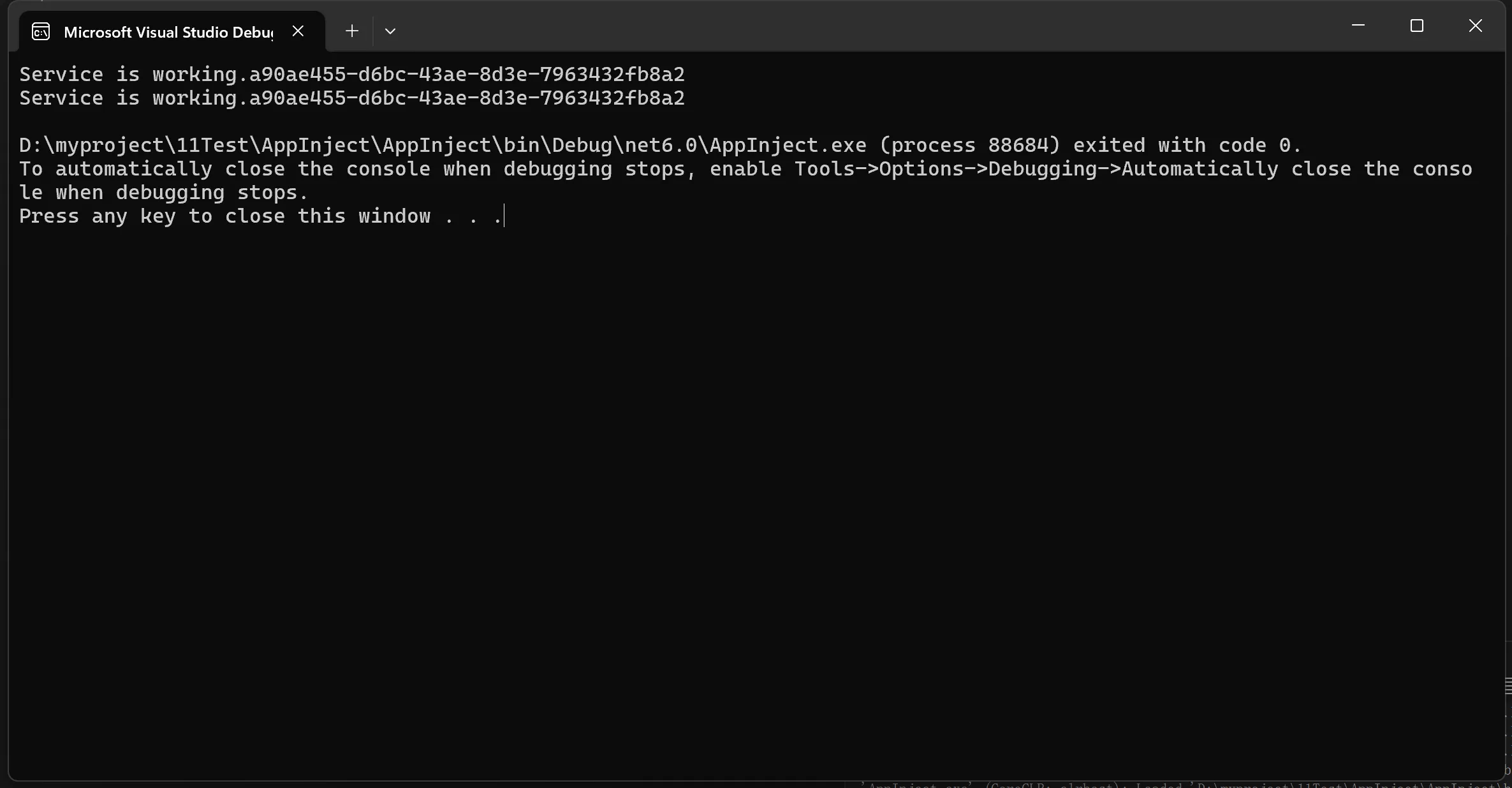目录
在现代软件开发中,依赖注入(Dependency Injection, DI)是实现松耦合、模块化和可测试代码的一个重要实践。C# 提供了优秀的 DI 容器,如ASP.NET Core中自带的Microsoft.Extensions.DependencyInjection,但是有时候我们希望自定义一些功能,比如通过特性(Attributes)实现自动注入。本文将详细介绍如何从零开始实现一个通过特性自动注入的功能。
引言
特性(Attributes)是C#提供的一种用于在运行时通过反射向代码中添加声明性信息的方式。通过结合反射和特性,我们可以实现一种自动依赖注入的功能,这样可以简化DI的配置。
Nuget安装
C#Microsoft.Extensions.DependencyInjection
创建特性
首先,我们需要创建一个特性,用于标记需要注入的类。
C#using System;
[AttributeUsage(AttributeTargets.Class, Inherited = false)]
public sealed class InjectAttribute : Attribute
{
public ServiceLifetime Lifetime { get; }
public InjectAttribute(ServiceLifetime lifetime = ServiceLifetime.Transient)
{
Lifetime = lifetime;
}
}
在这个示例中,InjectAttribute特性有一个可选参数Lifetime,用于指示依赖项的生命周期(如瞬时、作用域内或单例)。
实现自动注入
接下来,我们需要编写代码扫描程序集中的所有类型,并根据标记的特性注入依赖项。
C#using Microsoft.Extensions.DependencyInjection;
using System;
using System.Linq;
using System.Reflection;
public static class ServiceCollectionExtensions
{
public static void AddServicesWithInjectAttribute(this IServiceCollection services, params Assembly[] assemblies)
{
var typesWithInject = assemblies
.SelectMany(assembly => assembly.GetTypes())
.Where(type => type.GetCustomAttribute<InjectAttribute>() != null);
foreach (var type in typesWithInject)
{
var injectAttribute = type.GetCustomAttribute<InjectAttribute>();
switch (injectAttribute.Lifetime)
{
case ServiceLifetime.Singleton:
services.AddSingleton(type);
break;
case ServiceLifetime.Scoped:
services.AddScoped(type);
break;
case ServiceLifetime.Transient:
services.AddTransient(type);
break;
}
}
}
}
在这个扩展方法中,AddServicesWithInjectAttribute会扫描传入的程序集,并根据InjectAttribute将相应的类型添加到DI容器中。
完整示例
为了完整演示如何使用上述功能,我们将创建一些示例代码。
C#using Microsoft.Extensions.DependencyInjection;
using System.Reflection;
using System;
namespace DependencyInjectionExample
{
// 定义一个服务接口
public interface IMyService
{
void DoWork();
}
// 实现服务并标记 InjectAttribute
[Inject(ServiceLifetime.Singleton)]
public class MyService : IMyService
{
private Guid id { get; set; }
public MyService() {
id = Guid.NewGuid();
}
public void DoWork()
{
Console.WriteLine("Service is working."+this.id);
}
}
// 创建应用程序入口
class Program
{
static void Main(string[] args)
{
// 创建服务集合
var serviceCollection = new ServiceCollection();
// 自动注入服务
serviceCollection.AddServicesWithInjectAttribute(Assembly.GetExecutingAssembly());
// 构建服务提供者
var serviceProvider = serviceCollection.BuildServiceProvider();
// 解析服务并调用方法,指定使用 MyService1
var myService1 = serviceProvider.GetService<MyService>();
myService1.DoWork();
var myService2 = serviceProvider.GetService<MyService>();
myService2.DoWork();
}
}
}
在这个示例中,我们定义了IMyService接口和其实现MyService,并使用[Inject(ServiceLifetime.Singleton)]来标记MyService。在Main方法中,我们使用AddServicesWithInjectAttribute来自动扫描和注册服务,并最终通过依赖注入解析出服务并调用其方法。

总结
本文介绍了如何通过创建自定义特性与反射结合,实现一个简单的特性自动注入功能。在实际项目中,这种方式可以有效减少DI配置的冗余代码,提升开发效率。当然,这只是一个基础示例,实际应用中可以根据需要进行扩展和优化。
希望这篇文章对你有所帮助!如果有任何问题或建议,欢迎留言讨论。
本文作者:rick
本文链接:
版权声明:本博客所有文章除特别声明外,均采用 BY-NC-SA 许可协议。转载请注明出处!